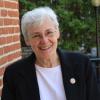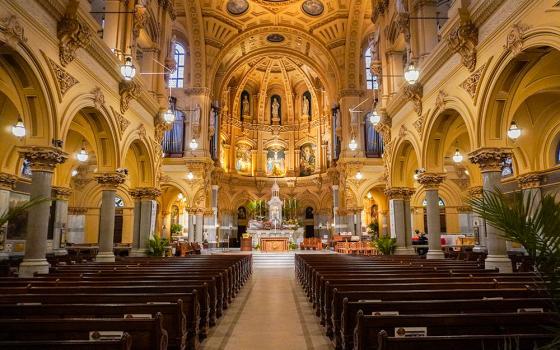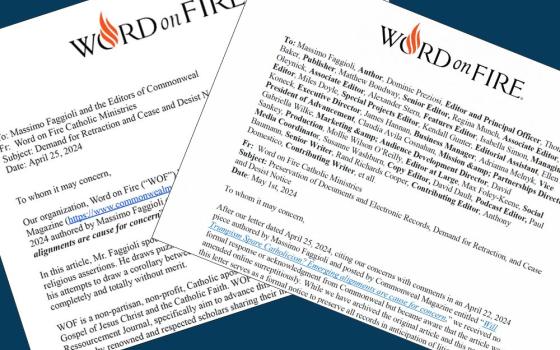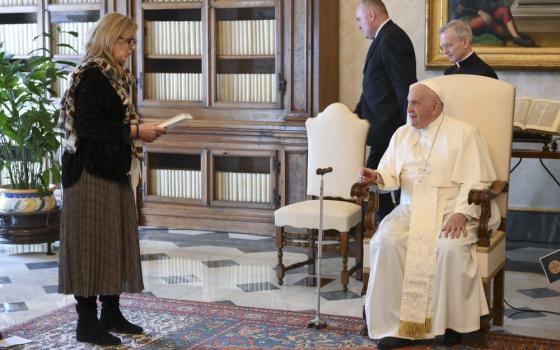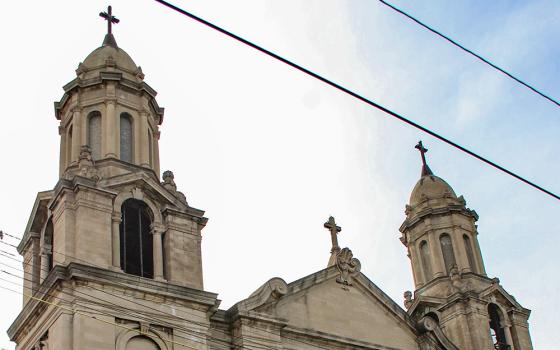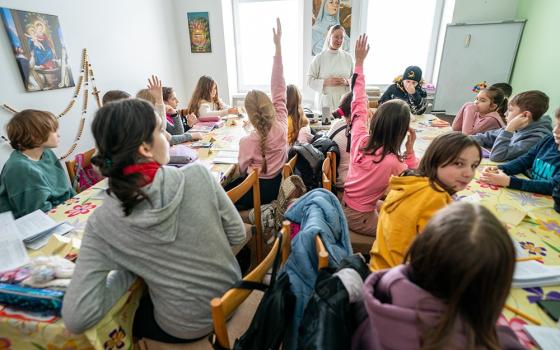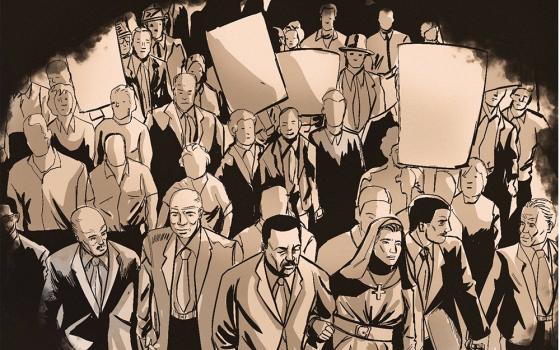
Detail of "New York from the Heights near Brooklyn," watercolor painting by William Guy Wall, circa 1820-23 (Metropolitan Museum of Art)
"To dream the impossible dream / To fight the unbeatable foe / To bear with unbearable sorrow / To run where the brave dare not go. …" In "Man of La Mancha," Don Quixote sang those words in his imaginary role as the chivalrous hero to Dulcinea, the lady of the court he had invented for his dream quest. His idealistic song ends with the idea that if he is true to his quest, the world will be better because one man "strove with his last ounce of courage to reach the unreachable star." Of course, Don Quixote was not mentally well.
Quixote is an extreme example of every person or group that dreams of making a better, if not perfect, world. A century before Miguel de Cervantes wrote about Don Quixote, St. Thomas More, in 1516, described a perfect society he called "Utopia," which means no place (ou: not, topos: place). More invented Utopia as a place where all religions are acceptable, where male and female priests are elected by the people, and where no one needs private property because everyone's needs are met. More's Utopia was actually more a critique of British society than a serious plan for an alternative.
Western thinkers, like St. Benedict and Karl Marx, have used their discontents to help them envision eutopia, a word that means a beautiful (eu) place for humans to thrive. Benedict started a movement in the sixth century that continues today in the church's multiplicity of congregations of women and men religious. Marx's ideas have been taken up by socialists and communists with widely divergent results.
For the next two weeks, we will hear about St. John's eutopia as he describes it in the Book of Revelation.
John is not hoping for a back-to-nature return to the virgin simplicity of Eden. But he is trusting that God gave humanity the vocation to continue the work of creation. John's ideal is a city, the fruit of creation and the work of human hands.
In John's vision, the new heaven and Earth do not appear until the former ones have passed away. That suggests that John is talking about something like a resurrected creation. On the model of the risen Christ, it is a product of its history and yet thoroughly transformed. This is a vision of evolution reaching its pinnacle, the realization of the full potential of every person and every part of the universe.
One dimension of the beauty of this vision is its mysterious open-endedness. As the First Letter of John says, "What we shall be has not yet been revealed." In John's vision, the new Jerusalem comes down from heaven, meaning that unlike the impossible dream, it is God's creation, as real as the universe in which we now live and move.

(Mark Bartholomew)
John describes the new Jerusalem as a bride prepared to meet her husband. This is a way of saying that the new creation, unlike the first, starts with God but is not God's unilateral project.
The new creation flows from the collaboration of a loving God and humanity eager to be in union with God. It is a way of being that comes about through the mutual love of God and humankind bringing everything to the realization of its greatest potential.
John runs out of words to describe the future he has glimpsed. Like the utopians, he explains elements of the future in terms of the problems that will be overcome; there will be no more weeping, death, mourning or pain. But a unique characteristic of John's new Jerusalem is that rather than have any governance or, as we shall hear next week, even a temple, life here is structured only by the fact that God dwells within creation and creation dwells in God.
John's vision is a mystery, meaning that there is always more to be discovered in it. It is neither an impossible dream nor a reality that any philosophy or form of government can construct.
Nevertheless, John tells us about it so that we can try to imagine it, so that we can hope for it, so that our belief that this new Jerusalem is our destination will provide the orientation for how we live from now on. We move toward it with every grace-touched activity that creates more love, more unity within creation, more union among human beings and between humanity and God.
John is describing God's dream for creation. He begins with what Genesis describes as our vocation and carries it through to Christ's mission to bring us into full union with God. We believe Christ has overcome the foe and wipes out sorrow. What remains for us now is to follow and to go where only Christ can lead us.
[Mary M. McGlone is a Sister of St. Joseph currently writing the history of the Sisters of St. Joseph in the U.S.]
Editor's note: This Sunday Scripture commentary was originally published in Celebration, a comprehensive pastoral resource. Sign up to receive weekly Scripture for Life emails.
Advertisement
